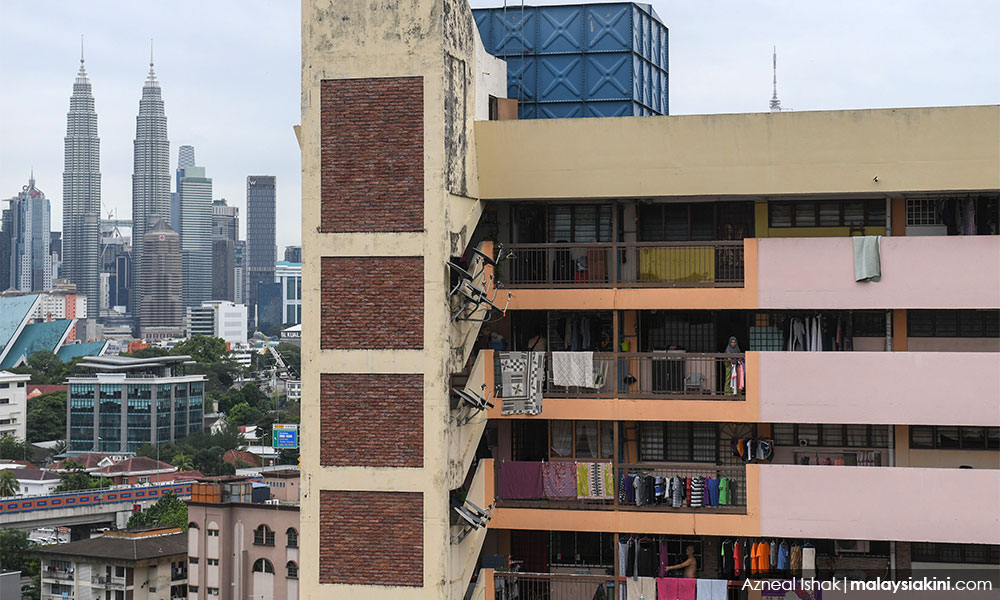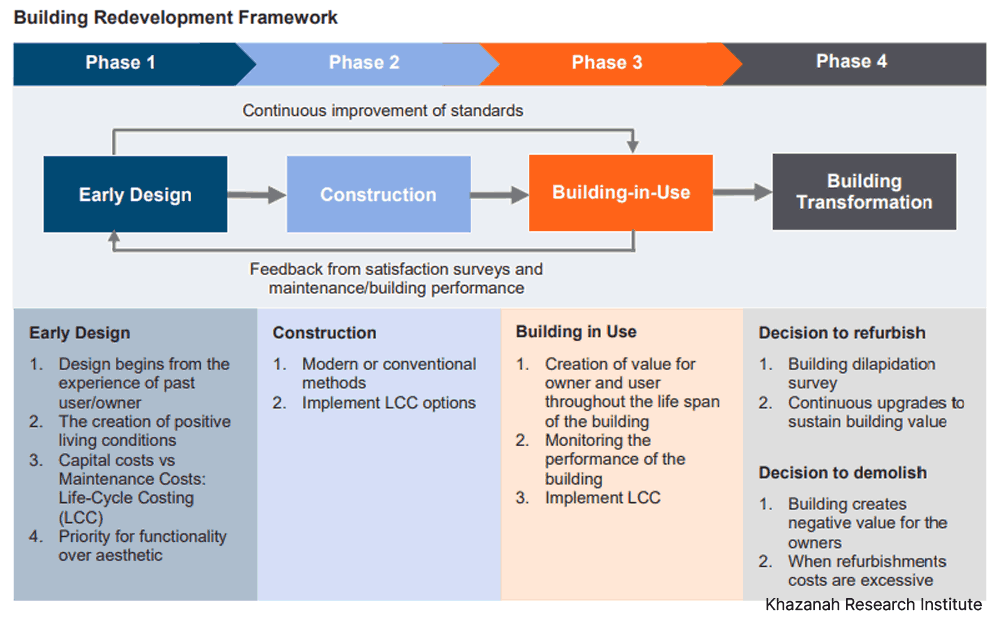Malaysia’s public housing policy does not provide an exit plan for those living in social housing, leaving them trapped within the system, a study by Khazanah Research Institute (KRI) found.
The report, launched today, found dwellers of projek perumahan rakyat (PPR) - public housing schemes - are unable to find better or suitable housing in the private market, even when their economic conditions have improved.
Public housing is generally meant for households earning less than RM3,000 a month; however, it is found even the minority of those who earn more than that cannot afford to move out of public housing.
KRI researchers, who surveyed five PPR housing complexes in Kuala Lumpur and Penang, found dwellers are stuck in public housing if they want to remain living in the same locality because they just cannot afford to rent in the private market in the same area.
This is based on data collected of comparable properties for rent or for sale within the vicinity of the public housing.
“A PPR home would cost RM124 per month in rent, but the moment a family chooses to move out and rent privately, they will need to pay RM500 to RM1,000 or more for housing that is of the same standard.
“This makes it hard for them to leave public housing unless they are willing to move far away, disrupting their lives,” said researcher Puteri Marjan Megat Muzafar at the report’s launch.
Difficult to secure housing loans
She added that public housing dwellers are also priced out of buying comparable properties in the local market, including those that are even smaller than the public housing units they are staying in.

KRI’s study also found that the median age of public housing dwellers was 52 to 54, with many nearing retirement age, making it difficult to secure housing loans.
This situation keeps public housing dwellers either trapped in public housing for generations, or they are forced to live in properties in worst conditions when they “graduate” out of the scheme.
Fellow KRI researcher Theebalakshmi Kunasekaran added that although 26 percent of respondents have potential to move out of public housing, more than 50 percent surveyed will not do so, for various reasons including high cost of private rental.
She said that rental should not exceed 25 percent of monthly income, so for a household earning RM4,000, rental should not exceed RM1,000.
"But options for private rental at RM1,000 a month are very limited and none are close to the existing PPR dwellings," she said.
She added that the policy today focuses on a "building solution", where housing units are built without consideration for good standards of living.
“Only limited attention is given to positive living conditions,” Theebalakshmi said.
Other researchers for the study 'Decent Shelter for the Urban Poor' were Suraya Ismail, Rachel Gong, Gregory Ho, Muhammad Nazhan Kamaruzuki and Adam Manaf Mohamed Firouz.
Cramped dwellings in shoddy buildings
They found that for those who do not leave the scheme, conditions become worse as families grow, leaving little space in the dwellings which can be as small as 535 sq ft.
This is because older PPR flats do not follow the standard requirements of at least 800 sq ft for a three-bedroom apartment.
There is also an inefficient distribution of space because all units have the same floor area and layout, without considering the differences between households, unlike in countries like Singapore where homes are distributed according to household size.
Public housing dwellers surveyed were also found to be less liveable because of poor maintenance.
The units are built for cheap by the federal government, causing higher maintenance costs as materials undergo wear and tear. This is a cost that local governments, which take on maintenance duties, may not be able to cover, the study found.

Poor maintenance includes issues of sanitation, general facilities which are in a state of disrepair, and in other cases, lack of facilities, especially for the disabled and elderly.
This is despite one in 10 households having at least one member who has special needs, it found.
Social housing ownership not good policy
The government’s policy to allow ownership of social housing, instead of rental only, also exacerbates issues within social housing, the study said.
Not only does it deprive shelter of those who need social housing on a rental basis, but it also creates a situation where social housing unit owners are holding negative equity in unlivable and poorly maintained housing blocks.
To address this, the researchers suggest a framework that takes into account the entire life cycle of the public housing project from planning to the building’s “end of life”.
This means the policy must not only properly plan public housing and design to meet demand needs but also include auditing mechanisms to see if the building is still fit for the purpose intended.
If it is found that it costs more to maintain or refurbish a public housing building, it should be demolished, the researchers proposed.
They also proposed a national housing survey to populate a housing registry to monitor the stock of public housing available, a rental database to capture supply and rents in the private sector, and a building condition survey to ensure good quality housing is provided in both markets.
The researchers also proposed a more streamlined selection criteria, supported by existing data including from the e-Kasih database, to ensure public housing is made available for those who truly need it.

No mapping of social housing in Malaysia
Commenting on the proposals in a panel discussion after the launch, Local Government Development secretary-general Amir Onn Mustapha agreed that it would be better for the government to move towards rental-only schemes in land-scare urban areas.
Speaking in a personal capacity, he said he agrees with this proposal by the KRI researchers to discontinue ownership of social housing, especially in urban areas, so the government will not have to continue building social housing for the poor who are migrating into cities.
“On average it costs RM200,000 (to build a unit) but we are selling it for only RM40,000. So a rental concept is much better (for the government),” he said.
He said about three-quarters of social housing is owned while a quarter is leased out.
“If possible, it would be good to have commitment from the government, along with our Economy Ministry, to move towards a fully rental concept to change the situation we’re in,” he said.
He added there is a need for proper mapping of existing public housing against those who need housing, to truly understand the demand for social housing, how to better manage this demand, and to manage those who are served by social housing.
“I agree with this study. I have been in the building industry for a while and when we do a project we usually need to do mapping of whatever there is underground and so on.
“So, for this we also need mapping, that is, to map how many people need housing and how many homes need to be built and what types of homes,” he said. - Mkini




No comments:
Post a Comment
Note: Only a member of this blog may post a comment.